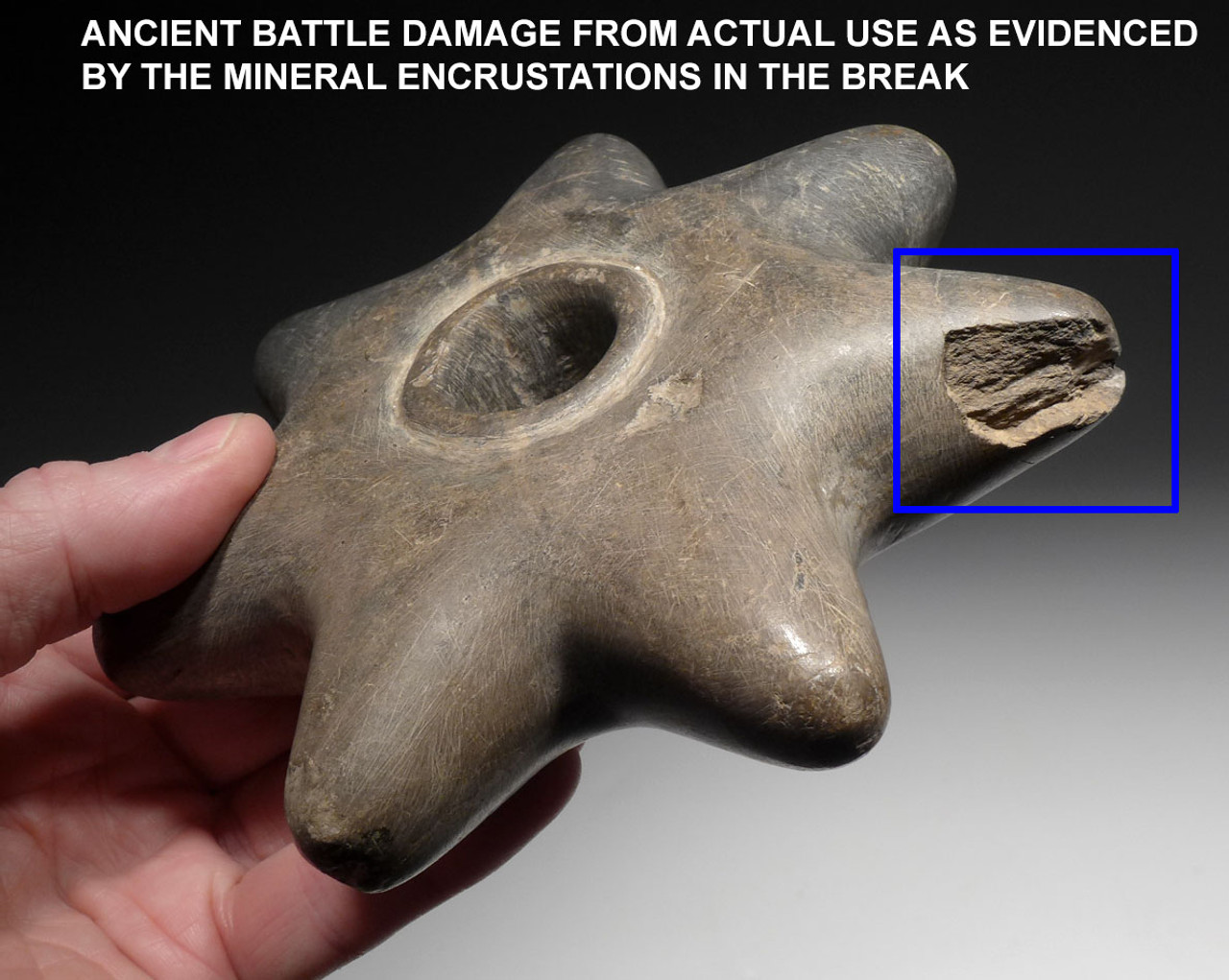Product Description
Without question, this is THE LARGEST stone Pre-Columbian star mace club head we have ever seen!!! It is TWICE THE DIAMETER AND THICKNESS of typical large examples! The weight and size of the shaft hole would have required this weapon to be swung with TWO HANDS. Look at the photo of the thickness. This would have been such an intimidating shock weapon, able to kill an enemy with a single blow to the head. Not only was it functionally deadly, it actually has original battle use damage on its point. The photos of the this area show identical sediment and patina exist on the micro-crevices of the break and are similar to those on the outside - a trait only seen in surfaces of ancient origin. The nature of the damage also indicate it was of combat origin.
This is such an impressive weapon and a prize acquisition for any advanced collection featuring a complete array of Pre-Columbian weapons and war items.
SEE MORE PRE-COLUMBIAN ARTIFACTS
HISTORY
Starting in the beginning of the 13th century A.D. until their final defeat to the Spanish in 1572, the Inca Empire grew to become the largest empire in pre-Columbian America. Their peak was between the years 1438 and 1533 where they ruled an area as large as the historical empires of Eurasia. Their territory included Peru, southwest Ecuador, western and south central Bolivia, northwest Argentina, the majority of modern Chile, and southwest Colombia, controlled from their center in the city of Cusco in southeastern Peru.
A number of religious cults existed in the empire with regional beliefs but the Incan leadership practiced the worship of their main sun god, INTI. The Incas considered their king, the Sapa Inca, to be the "son of the sun.".
Despite the Incas building one of the largest imperial states in human history, they lacked many basic inventions. They had no wheeled vehicles, did not use animals for transportation or pulling plows, had no knowledge of iron or steel, and used no form of writing. The Inca Empire functioned largely without money or markets, instead using the barter system for the exchange of goods and services. In light of this, they were far from being a primitive society. The Incas built monumental stone architecture that to this day, still defies explanation. They also developed an extensive system of roads and highways reaching all ends of the empire. Their achievements in finely-woven textiles are legendary, and they developed innovations in farming and architecture in the extreme terrain of the Andes where most civilizations would have never dared occupy.
 US DOLLAR
US DOLLAR
 EURO
EURO
 AUSTRALIAN DOLLAR
AUSTRALIAN DOLLAR
 CANADIAN DOLLAR
CANADIAN DOLLAR
 POUND STERLING
POUND STERLING
















